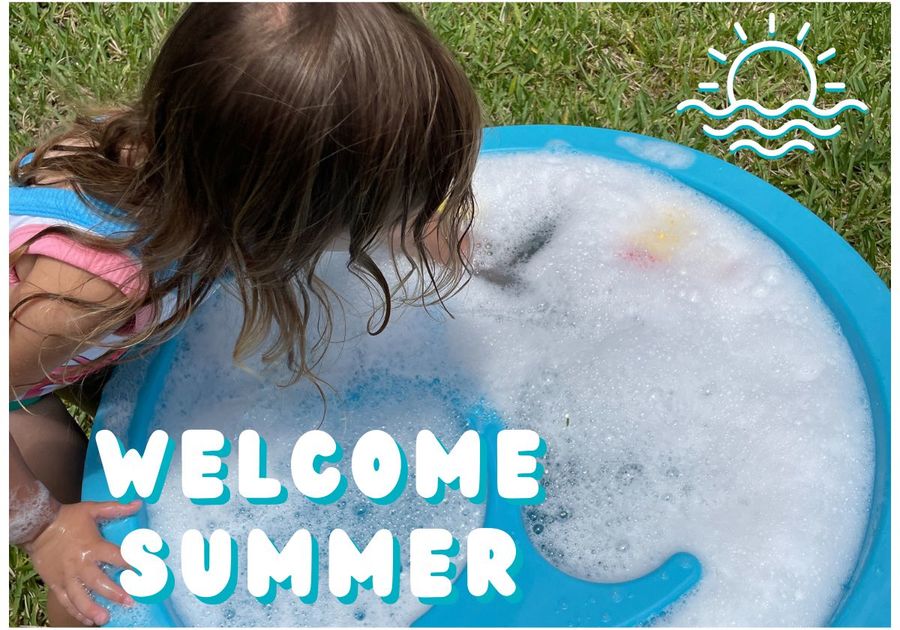Do your kids love playing with water? Did you know you could turn a water play day into a quick and easy STEAM learning opportunity?
STEAM stands for science, technology, engineering, arts and mathematics. When you incorporate at least one of these elements into an activity, you are giving your children an opportunity for STEAM learning. Check out how I did that with a recent water play day!
My three year old daughter loves playing with water. Whether it is at a splash pad, in a pool, in the bath or in our backyard! I've seen a lot of ideas about making sensory tables using water, and I incorporate those in a water play day. I mean, which child doesn't get soaked playing with water anyhow? A water sensory activity allows children to explore with water by pouring water into various sized containers, using toys or objects to scoop up water, letting objects sink or float, and letting children feel how water effects various toys or objects.
In this particular STEAM activity, I was teaching my daughter about the sense of sight and touch. The first time we did this, it was an impromptu learning opportunity. Sometimes the best lessons aren't even planned! I added some dish soap to our water play table and let the hose pressure make the bubbles. We saw this activity at the Orlando Science Center the previous year and I was waiting for my daughter to be old enough to handle this activity at home.
As the bubbles were multiplying, she said, "Mommy where are my toys?" The bubbles were hiding the toys and she couldn't find them as easily. This is where my teaching instincts kicked in. I said, "You have to find them. Can you see them with your eyes?" No, she said. "What are you using to find them?" I asked. She was able to answer by saying her hands after a few additional questions I asked to help guide her.
I then explained when she used her hands to find the objects she was using her sense of touch and when she could see the toys with her eyes, it was her sense of sight. I checked her understanding by asking:
- When we use our sense of sight, what are we using? (Eyes)
- If you can't see the toys, what did you use to find them? (Hands)
- When we use our hands, what sense are we using? (Touch)
Add any other questions as you do this with your children. Simpler guided questions are great for preschoolers. Repeating the question and giving them enough time to think about is key. Let them process the question before answering for them. And then, the next time you play with water and bubbles, ask all these questions again! I did this the next time we played bubbles and my daughter remembered her learning.
The first time you do this, just keep to the two senses. Then, the next time, you can add another sense, such as hearing the water, smelling the bubbles or grass, tasting a snack. Over time, you'll have a hands-on way of teaching the five senses to your young children.
In all, adding STEAM to a water play day takes just a few minutes. It's more about asking questions and being intentional about it. And then you'll have a young-scientist playing with water!
Click here to subscribe to the Macaroni KID Winter Garden-Ocoee newsletter for FREE! You'll get ideas like these, plus events going on in our community!


